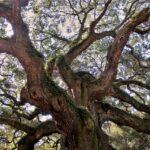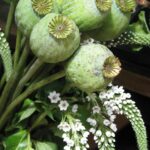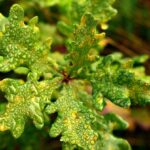Sweetgum Tree Seed Pods: Facts, Uses, and Identification Guide
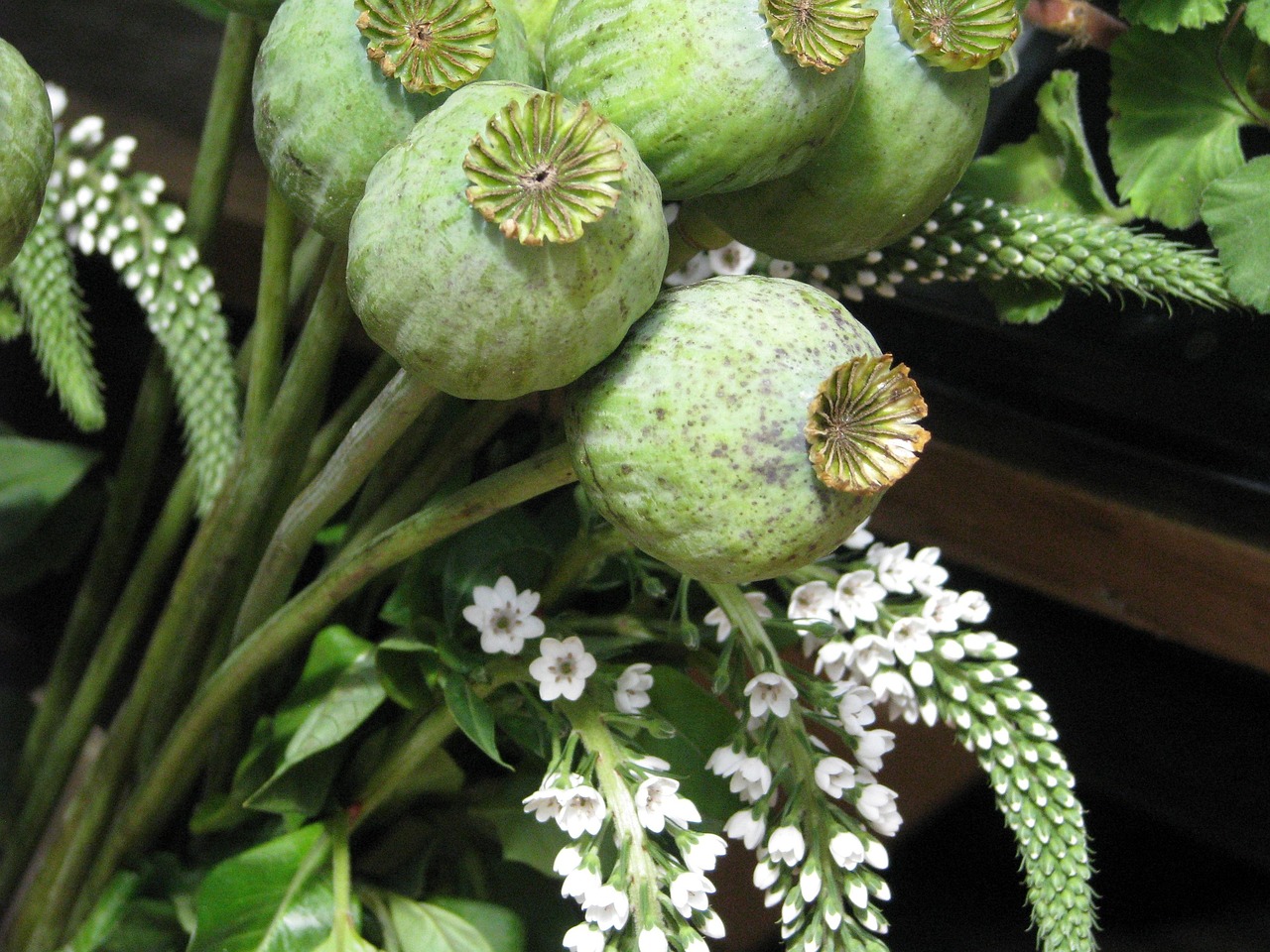
When you see those spiky, roundish things falling from a Sweetgum tree, you’re looking at the sweetgum seed pod. These aren’t just random bits of nature; they’re the tree’s way of reproducing. Each pod is essentially a complex fruit, and inside, it holds the seeds that will hopefully grow into new trees. The sweetgum seed pod is a distinctive, woody structure that houses the tree’s seeds. They’re unique in appearance, often described as looking like a small, spiky ball.
What Is a Sweetgum Seed Pod? Definition & Overview
These pods are a product of the Liquidambar styraciflua tree, commonly known as the Sweetgum. This tree is native to North America and is often planted for its shade and striking fall colors. The pods themselves are a significant characteristic of the tree, and they’re what many people notice, sometimes with a bit of annoyance, when the tree is in its fruiting stage. They are a key part of the tree’s life cycle, and understanding what they are helps appreciate the tree as a whole.
Here’s a quick look at what makes up a sweetgum seed pod:
- Structure: A spherical, woody casing.
- Surface: Covered in numerous sharp, protruding spikes.
- Contents: Contains many small, winged seeds.
These pods can be quite abundant, and while they might be a nuisance on a sidewalk, they play an important role in the ecosystem. They are a source of food for various wildlife and are a clear sign of a mature Sweetgum tree.
While some might find the seed pods inconvenient, they are a natural part of the Sweetgum’s reproductive process. Their spiky exterior is a defense mechanism and aids in seed dispersal.
It’s interesting to note that the seeds inside these pods are quite small, and the pods themselves can persist on the tree for a while, even through winter, before eventually breaking apart to release their contents.
Anatomy of the Sweetgum Seed Pod
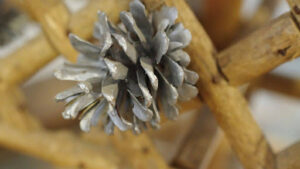
When I look at a sweetgum seed pod, or what many people call a ‘gumball,’ I’m always struck by its unique design. It’s not just a simple ball; it’s a complex little structure. The whole thing is basically a collection of many small, woody capsules clustered together, forming a roughly spherical shape. These pods typically measure about an inch to an inch and a half across.
Each of these individual capsules has a couple of sharp, pointy spikes sticking out from its tip. When you count them all up, a single pod can have anywhere from 80 to 120 of these little spikes. It’s these spikes that give the pod its characteristic prickly feel and appearance.
Inside each capsule, you’ll find one or two seeds. These seeds are quite small, and they have a little wing attached, which helps them travel on the wind once the capsule opens. It’s interesting to note that not all the seeds inside a pod are fertile; many are actually undeveloped and look a bit like sawdust.
Here’s a breakdown of what I observe:
- Overall Shape: Globose, or ball-like.
- Capsules: Numerous (40-60) woody capsules make up the ball.
- Spikes: Each capsule has 1-2 terminal spikes, leading to 80-120 spikes per pod.
- Seeds: Each capsule contains 1-2 seeds, which are winged for dispersal.
The way these pods are constructed is quite remarkable. They hang on the branches throughout the winter, and only after they open do they release their seeds. The empty husks often remain, which is why you see so many of these spiky balls on the ground even after the seeds are gone. It’s a clever way for the tree to ensure its offspring get a chance to spread.
If you’re interested in collecting seeds for planting, it’s best to gather the pods when they are fully brown but before they completely dry out and split open. This way, you can collect the seeds before they scatter. I found a helpful guide on how to grow sweetgum trees that explains this process in more detail collecting sweetgum seeds.
Lifecycle Timeline of Sweetgum Seed Pods
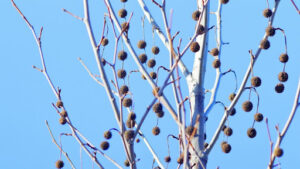
The journey of a sweetgum seed pod from a tiny flower to a prickly sphere is a fascinating process that unfolds over several months. It all starts in the spring, around April or May, when the sweetgum tree produces its flowers. These aren’t your typical showy blossoms; they’re small, greenish, and unisexual, with male flowers clustered in long stalks and female flowers in a single ball.
After pollination, the magic begins. The fertilized female flowers start to develop into the characteristic spiky seed balls we know. Initially, these developing pods are quite small and green, often blending in with the foliage. Throughout the summer, they continue to grow, hardening and increasing in size. By late summer and early fall, typically August through October, these pods reach their full maturity. They are firm, woody, and covered in those distinctive sharp points.
The mature seed pods will hang on the branches throughout the winter, often persisting well into the following spring. During this time, the pods slowly release their seeds, which are small, winged, and designed to be carried by the wind. You’ll often find fallen, opened pods scattered on the ground beneath the tree, especially after strong winds or storms. The process of seed dispersal can continue for a long time, with some pods remaining intact on the tree for months.
Here’s a general timeline I’ve observed:
- Spring (April-May): Flowers appear, and pollination occurs.
- Summer (June-August): Developing seed pods grow and harden, remaining green.
- Late Summer/Early Fall (August-October): Pods mature, becoming woody and spiky, and begin to release seeds.
- Fall/Winter (October-March): Mature pods persist on branches, continuing seed dispersal.
- Late Winter/Early Spring (March-May): Most remaining pods fall, making way for the new season’s flowers.
It’s interesting to note that while the pods are designed to release seeds, they are quite durable. Many will remain attached to the tree long after their seeds have been dispersed, contributing to the tree’s appearance through the winter months.
So, if you’re looking to collect sweetgum seed pods for crafts or other purposes, late fall and winter are generally the best times to find them on the ground, though you might still find some clinging to the branches.
Variations and Characteristics of Sweetgum Seed Pods
When I first started looking into sweetgum seed pods, I was struck by how much they can vary. It’s not just a one-size-fits-all situation. These little spiky balls, often called gum balls or monkey balls, can really differ depending on the specific tree and even the year.
Generally, a mature seed pod is about the size of a golf ball, typically ranging from 1 to 1.5 inches (25-40 mm) across. They’re not perfectly round, but more of a globose shape, and they’re covered in these little pointy bits, usually numbering between 80 and 120 in total. Each pod is actually made up of many smaller sections, called capsules, and each of those holds one or two tiny seeds. When the pod opens up to release its seeds, you’ll see a small hole left behind for each capsule.
| Characteristic | Typical Range |
| Diameter | 1 – 1.5 inches (25-40 mm) |
| Number of Spikes | 80 – 120 |
| Number of Capsules | 40 – 60 |
The color is another interesting point. When they first form, they’re usually a greenish hue. As they mature and dry out, they transition to shades of brown. You might find them anywhere from a light tan to a darker, woody brown. Some can even have a slightly reddish tint, especially when they’re still developing on the tree.
It’s worth noting that while the general shape and spikey texture are consistent, the density of the spikes and the overall firmness of the pod can vary. Some pods feel quite hard and woody, while others might seem a bit lighter or more brittle.
I’ve noticed that pods that fall earlier in the season, or those that have been exposed to a lot of moisture, can sometimes feel softer or even start to break down more quickly. Conversely, those that stay on the tree longer into winter tend to be quite robust.
So, if you’re collecting them for crafts or just observing them, keep an eye out for these subtle differences. It’s these variations that make each one a little unique, even though they all come from the same type of tree.
How to Identify Sweetgum Seed Pods in the Wild
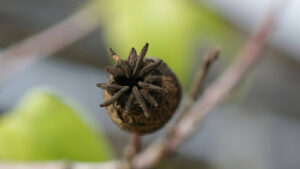
Spotting sweetgum tree seed pods in the wild is pretty straightforward once you know what to look for. These aren’t your typical smooth, round fruits. Instead, they’re quite distinctive, often described as looking like small, spiky balls.
When you’re out and about, keep an eye out for the trees themselves. Sweetgum trees typically have a nice, oval shape as they mature. Their leaves are also a giveaway – they’re star-shaped with about five points and have a slightly toothed edge. The bark on older trees can look a bit like alligator skin, with rough, long ridges.
But the real tell-tale sign, especially in the fall and winter, is the seed pods themselves. They’re usually about an inch to an inch and a half across and covered in little woody spikes. You’ll often find them scattered on the ground beneath the tree.
Here’s a quick rundown of what to expect:
- Appearance: Globular, about 1-1.5 inches in diameter.
- Texture: Covered in numerous small, woody spikes.
- Color: They start green and mature to a brown or grayish-brown.
- Behavior: They tend to stay intact on the branches for a while, even after releasing seeds, and then fall to the ground.
The most reliable way to identify them is by their unique spiky exterior. You’ll often find a good number of them littering the area directly under the tree, which makes them hard to miss. They’re quite different from the softer, disintegrating fruits of trees like sycamores, which can sometimes be mistaken for them from a distance.
These pods are a natural part of the sweetgum tree’s reproductive cycle. While they might seem like a nuisance when they cover your lawn, they play a role in the ecosystem, providing food for various birds and small mammals.
Uses of Sweetgum Seed Pods
While many people see the spiky sweetgum seed pods as a nuisance, especially when they litter yards and sidewalks, I’ve found they actually have a surprising number of uses. It’s interesting to consider how something so common can be repurposed.
Historically, the tree’s resin, sometimes called liquid amber, has been used. This sticky substance, which comes from the bark, has a pleasant smell and was traditionally used for medicinal purposes, like treating coughs and skin issues. It was even used to make chewing gum. Some research suggests that the seeds themselves might be a source of shikimic acid, which is an ingredient in some medications. I’ve also heard of people making teas from the pods, spicing them up with cinnamon and honey, though I haven’t tried that myself yet.
Beyond potential medicinal applications, the wood from the sweetgum tree is useful. While not as long-lasting as oak for growing mushrooms, sweetgum logs can be used for shiitake cultivation. I’ve also seen suggestions that the “half-logs” – the outer sections when the wood is split – can make good backlogs for a fireplace, burning slowly and reflecting heat.
For those interested in crafts or unique projects, the seed pods themselves can be incorporated into various creations. Some people collect them for decorative purposes, perhaps in dried arrangements or even as part of natural craft projects.
It’s worth noting that while the pods can be a bit prickly underfoot, the criticism against the tree often seems overblown. I’ve personally found them to crush easily and not pose a significant tripping hazard.
Here are a few ways people have utilized sweetgum seed pods and related parts:
- Medicinal Uses: Historically, the tree’s resin and sometimes the pods have been used in traditional remedies for various ailments.
- Mushroom Cultivation: Sweetgum logs can be used to grow shiitake mushrooms, though they may not last as long as other wood types.
- Firewood: The split outer sections of sweetgum logs can serve as slow-burning firewood.
- Crafts and Decor: The unique shape of the seed pods makes them suitable for decorative or craft purposes.
It’s always fascinating to discover the hidden potential in everyday natural objects. If you have sweetgum trees nearby, perhaps you’ll look at those spiky balls a little differently now. For those interested in native plants, the sugarberry tree is another interesting option with its own set of uses and benefits.
Ecological Role and Environmental Impact of Sweetgum Seed Pods
When I look at a sweetgum tree, I often think about how its spiky little seed pods play a part in the bigger picture of nature. It’s not just about the mess they can make on a sidewalk, you know? These pods are actually a food source for a variety of creatures. For instance, goldfinches and nuthatches really seem to enjoy the seeds inside. It’s pretty neat to see them flitting around, pecking away at the pods.
Beyond just feeding birds, these trees have a role in the soil, too. I’ve read that they can help improve soil quality, especially in areas that have seen some disturbance, like after logging. They’re considered a pioneer species, meaning they’re good at getting established in tougher spots. Some research even suggests they can be used to help clean up areas with toxic spills, which is quite an interesting environmental application.
It’s also worth noting how these trees reproduce. While the seed pods are one way, sweetgums also tend to sprout from their roots if the main tree is cut down. This means they can spread quite effectively, sometimes even popping up where you least expect them.
The spiky seed pods, while sometimes a nuisance underfoot, are a vital part of the sweetgum’s life cycle, providing sustenance for wildlife and contributing to the tree’s propagation.
Here’s a quick look at some of the wildlife that interacts with sweetgum seed pods:
- Birds: Many songbirds, including goldfinches and nuthatches, feed on the seeds.
- Small Mammals: Young trees can sometimes be damaged by rabbits and mice, indicating an early interaction in the tree’s life.
- Fungi: Certain types of mushrooms, like Reishi and Oyster mushrooms, are known to grow in association with sweetgum trees.
It’s a whole ecosystem at play, and those little spiky balls are a small but important piece of it. If you’re interested in how trees reproduce from seeds, you might find learning about collecting Southern Magnolia seed pods interesting as well.
Handling & Management of Sweetgum Seed Pod
Dealing with the aftermath of sweetgum seed pods, often called gumballs, can be a bit of a chore for homeowners. These spiky little things can accumulate on lawns, sidewalks, and driveways, creating a bit of a hazard, especially if you’re walking barefoot. I’ve found that while they can be a nuisance, there are ways to manage them. For immediate cleanup, a leaf blower can help gather them into piles, or a specialized yard vacuum with a bagger attachment works wonders. If you’re looking for a more hands-on approach, a simple rake or even a sturdy broom can do the trick, though it takes more effort.
For those interested in propagation, starting sweetgum trees from seed is possible, though it requires patience. The seeds are found within those distinctive spiky pods. One method I’ve read about involves collecting the pods when they’re mature but before they fully split open. You can then let them dry indoors, which encourages them to open and release the seeds. After collecting the seeds, stratification, a process that mimics winter conditions, is often recommended to improve germination rates. This typically involves mixing the seeds with a moist medium, like sand or peat moss, and refrigerating them for a period.
Here’s a general approach to collecting and preparing seeds for propagation:
- Collect mature seed pods in the fall.
- Allow pods to dry completely in a warm, dry place until they split open.
- Separate the seeds from the pod material.
- Stratify seeds by storing them in a moist medium in the refrigerator for 1-3 months.
- Sow stratified seeds in well-draining soil in the spring.
It’s worth noting that sweetgum trees can also reproduce through root suckering, meaning new shoots can emerge from the root system. This can lead to a denser stand of trees over time. If you’re trying to control the spread or manage the mess, understanding this aspect of their growth is helpful. I’ve seen instances where these suckers can pop up quite a distance from the parent tree, which can be surprising. If you’re considering planting a sweetgum, think about its mature size and the potential for seed pod drop when choosing a location. It might be best to plant them away from high-traffic areas or patios. Some people have even found creative uses for the dried pods, incorporating them into seasonal decorations or crafts, which can be a nice way to repurpose the fallen bounty. I’ve seen them painted and used as ornaments, which is a neat idea.
While the spiky seed pods can be a nuisance underfoot, they also play a role in the ecosystem, providing food for certain wildlife. For those who appreciate the tree’s form and fall color, finding ways to manage the pods or even repurpose them can make coexistence more pleasant. It’s a matter of balancing the tree’s natural processes with the needs of the landscape. I’ve learned that a little planning goes a long way when it comes to managing any tree’s natural shedding.
Sweetgum trees can be a bit messy with their spiky seed pods. If you’re tired of cleaning them up or want to learn how to grow more of these trees, we’ve got you covered. Discover simple ways to manage the pod problem and even start new trees from these little guys. For more tips and professional help with your trees, visit our website today!
Frequently Asked Questions
What exactly is a sweetgum seed pod?
I understand that the spiky balls that fall from sweetgum trees can be a bit confusing. These are actually the seed pods, which are hard, round, and covered in little spikes. Each pod is made up of many smaller parts, called capsules, and inside each capsule are one or two tiny seeds. When the pod opens up, these seeds are released to grow new trees.
When do sweetgum seed pods appear on the trees?
I’ve observed that sweetgum trees typically start producing these seed pods when they are about 20 to 30 years old. After that, they tend to make a good number of them each year, usually starting in the late spring or early summer. They stay on the tree for a while, and you’ll see them falling to the ground throughout the fall and even into winter.
Are sweetgum seed pods dangerous to step on?
I’ve personally found that while stepping on a sweetgum seed pod with bare feet can be quite uncomfortable, they usually crush underfoot and don’t pose a major tripping hazard for me. However, I do recognize that for some people, and especially for pets with sensitive paws, they can be a nuisance or even cause minor injury if stepped on directly.
Can sweetgum seeds be used for anything, like medicine or crafts?
I’ve learned that the seeds from sweetgum pods contain an important ingredient used in making the flu medicine Tamiflu. While I haven’t personally tried using them for crafts, their unique spiky appearance might make them interesting for certain decorative projects, though I always advise caution and research before using any plant part.
What is the ecological role of sweetgum seed pods?
From what I’ve seen, these seed pods play a role in nature by helping to spread sweetgum trees. Birds, like goldfinches, and small animals such as squirrels and chipmunks, enjoy eating the seeds inside. This helps scatter the seeds, allowing new trees to grow in different areas, especially in moist soil near water.
How can I tell if a tree is a sweetgum tree?
I find that identifying a sweetgum tree is pretty straightforward. Look for its distinctive star-shaped leaves with five points, which turn beautiful shades of red and orange in the fall. The bark often looks rough, like alligator skin, and of course, the signature spiky seed pods are a dead giveaway once the tree is mature enough to produce them.

